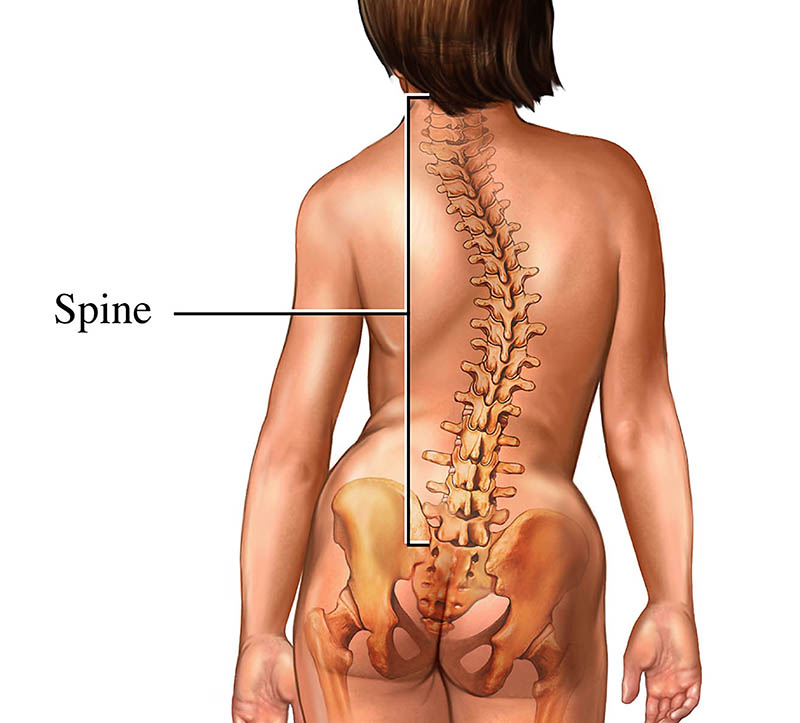Scoliosis: Symptoms, Causes, Treatment
What are the symptoms of scoliosis?
Scoliosis is a condition characterized by an abnormal sideways curvature of the spine. The symptoms of scoliosis can vary depending on the severity of the curvature and whether it is progressing. Common symptoms include:
- Uneven shoulders: One shoulder may appear higher than the other.
- Uneven waist: The waist may be uneven or one side of the rib cage may be higher than the other.
- Leaning to one side: The body may lean to one side.
- Uneven hips: One hip may be higher or more prominent than the other.
- Rib prominence: When bending forward, the ribs on one side may stick out more than the other.
- Back pain: Some individuals with scoliosis may experience back pain, but this is more common in adults with scoliosis than in children or adolescents.
- Breathing difficulties: Severe scoliosis can affect the position of the ribs and the ability of the lungs to function properly, leading to breathing difficulties.
- Digestive issues: In some cases, severe scoliosis can affect the position of the organs in the abdomen, leading to digestive issues such as constipation.
It’s important to note that not all cases of scoliosis cause symptoms, especially in mild cases. Scoliosis is often first detected during a routine physical exam or school screening. If you or your child has signs of scoliosis, it’s important to see a healthcare provider for a thorough evaluation and appropriate management.
What are the causes of scoliosis?
The causes of scoliosis can be classified into two main categories: idiopathic scoliosis and non-idiopathic scoliosis. Idiopathic scoliosis, which accounts for about 80% of cases, has no known cause, while non-idiopathic scoliosis is associated with specific conditions or factors. Here’s an overview:
- Idiopathic scoliosis: This type of scoliosis occurs in otherwise healthy individuals and is more common in adolescents, especially during growth spurts. The exact cause is unknown, but it is believed to involve a combination of genetic, environmental, and developmental factors.
- Infantile idiopathic scoliosis: This type occurs in children under the age of 3 and is more common in boys. It may resolve on its own or require treatment depending on the severity.
- Juvenile idiopathic scoliosis: This type occurs in children between the ages of 3 and 10 and is more common in girls. It has a higher risk of progression compared to infantile idiopathic scoliosis.
- Adolescent idiopathic scoliosis: This type occurs in adolescents between the ages of 10 and 18 and is the most common form of idiopathic scoliosis. It can progress during periods of rapid growth.
- Non-idiopathic scoliosis: This type of scoliosis is associated with specific conditions or factors that can cause or contribute to the development of the curvature. Some common causes include:
- Congenital scoliosis: This type is present at birth and is caused by abnormalities in the development of the spine.
- Neuromuscular scoliosis: This type is associated with conditions that affect the muscles or nerves, such as cerebral palsy, muscular dystrophy, or spinal cord injuries.
- Degenerative scoliosis: This type occurs in older adults and is caused by the degeneration of the spine due to aging, leading to a curvature of the spine.
- Traumatic scoliosis: This type is caused by a spinal injury or trauma that results in an abnormal curvature of the spine.
- Syndromic scoliosis: This type is associated with genetic syndromes, such as Marfan syndrome or neurofibromatosis, which can affect the development of the spine.
The exact cause of scoliosis can vary depending on the type and individual circumstances. In many cases, the cause remains unknown. Early detection and appropriate treatment can help manage scoliosis and prevent complications.
What is the treatment for scoliosis?
The treatment for scoliosis depends on several factors, including the severity of the curvature, the age of the individual, and whether the scoliosis is expected to progress. Treatment options may include:
- Observation: In mild cases of scoliosis, especially in children who are still growing, regular monitoring may be recommended to track the progression of the curvature. If the curvature remains stable and does not cause symptoms, treatment may not be necessary.
- Bracing: Bracing may be recommended for children and adolescents with moderate scoliosis to prevent further progression of the curvature as they grow. The brace is usually worn for several hours a day and is most effective when worn during periods of rapid growth.
- Physical therapy: Physical therapy exercises can help improve muscle strength and flexibility, which can help support the spine and improve posture in individuals with scoliosis. Physical therapy may be used alone or in combination with other treatments.
- Surgery: In severe cases of scoliosis, especially when the curvature is progressing despite other treatments, surgery may be recommended. The most common type of surgery for scoliosis is spinal fusion, which involves fusing together the vertebrae to stabilize the spine and reduce the curvature. Surgery is usually reserved for cases where the curvature is severe and is affecting the individual’s quality of life.
- Other treatments: In some cases, other treatments such as electrical stimulation, chiropractic manipulation, or acupuncture may be used to help manage symptoms of scoliosis. However, the effectiveness of these treatments for scoliosis is not well-established, and they are generally not considered first-line treatments.
The appropriate treatment for scoliosis depends on individual factors, and a healthcare provider specializing in spine disorders can help determine the most suitable treatment plan. Early detection and appropriate treatment can help manage scoliosis and prevent complications.




